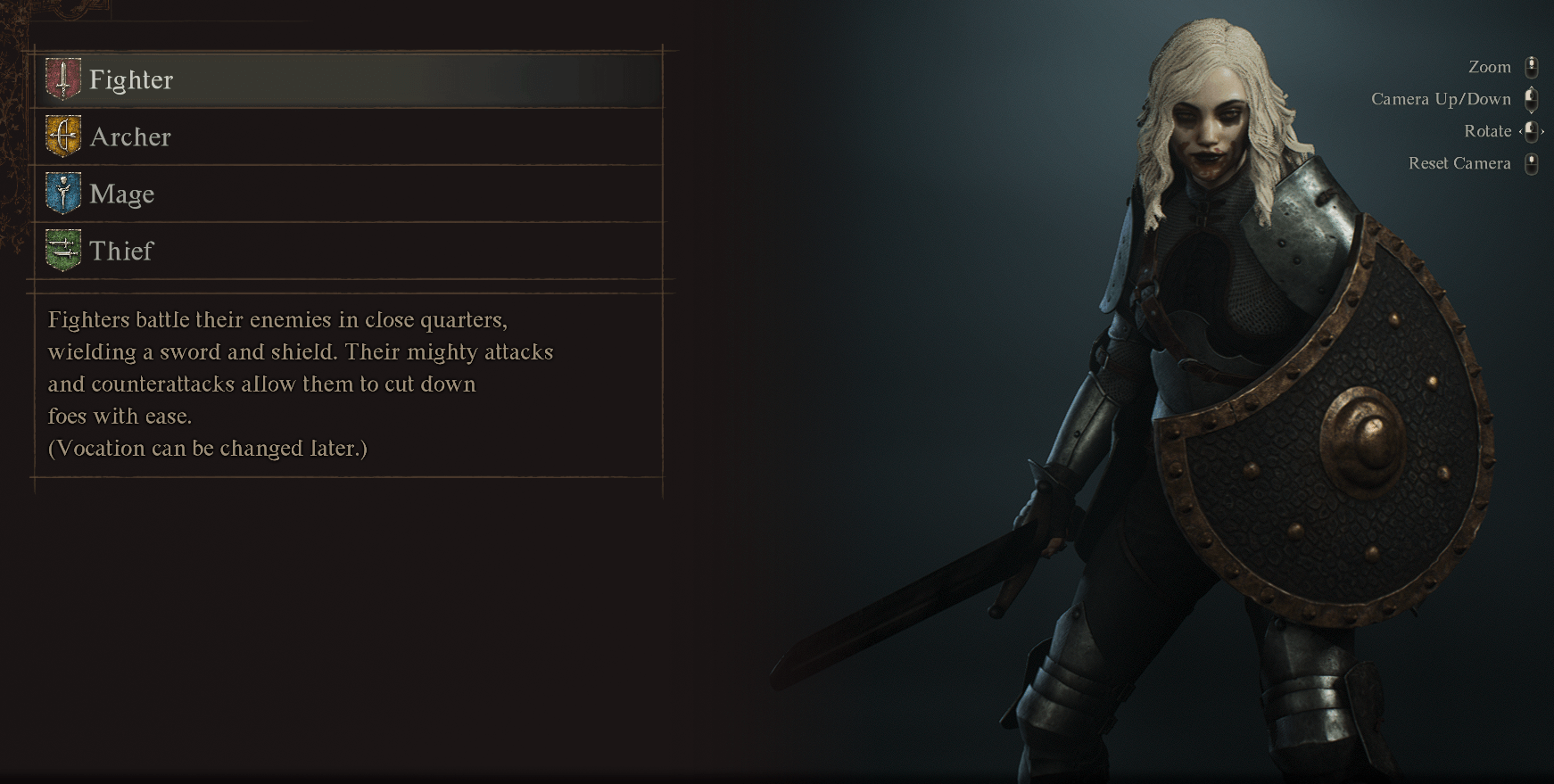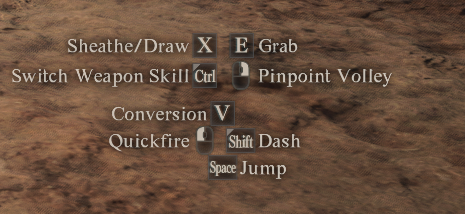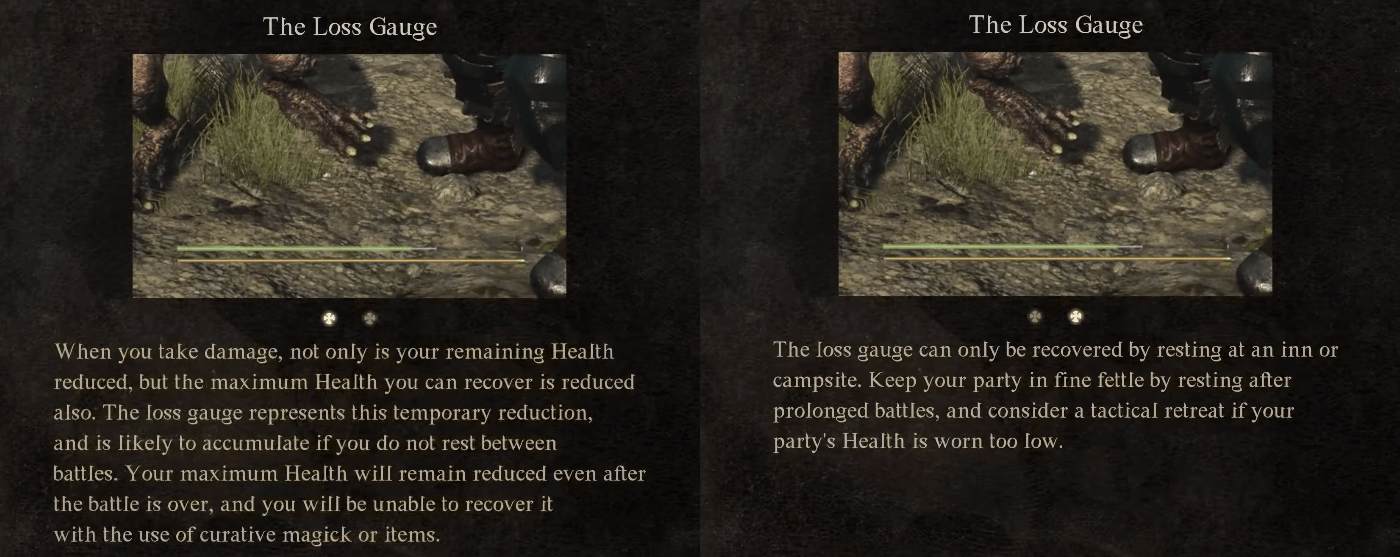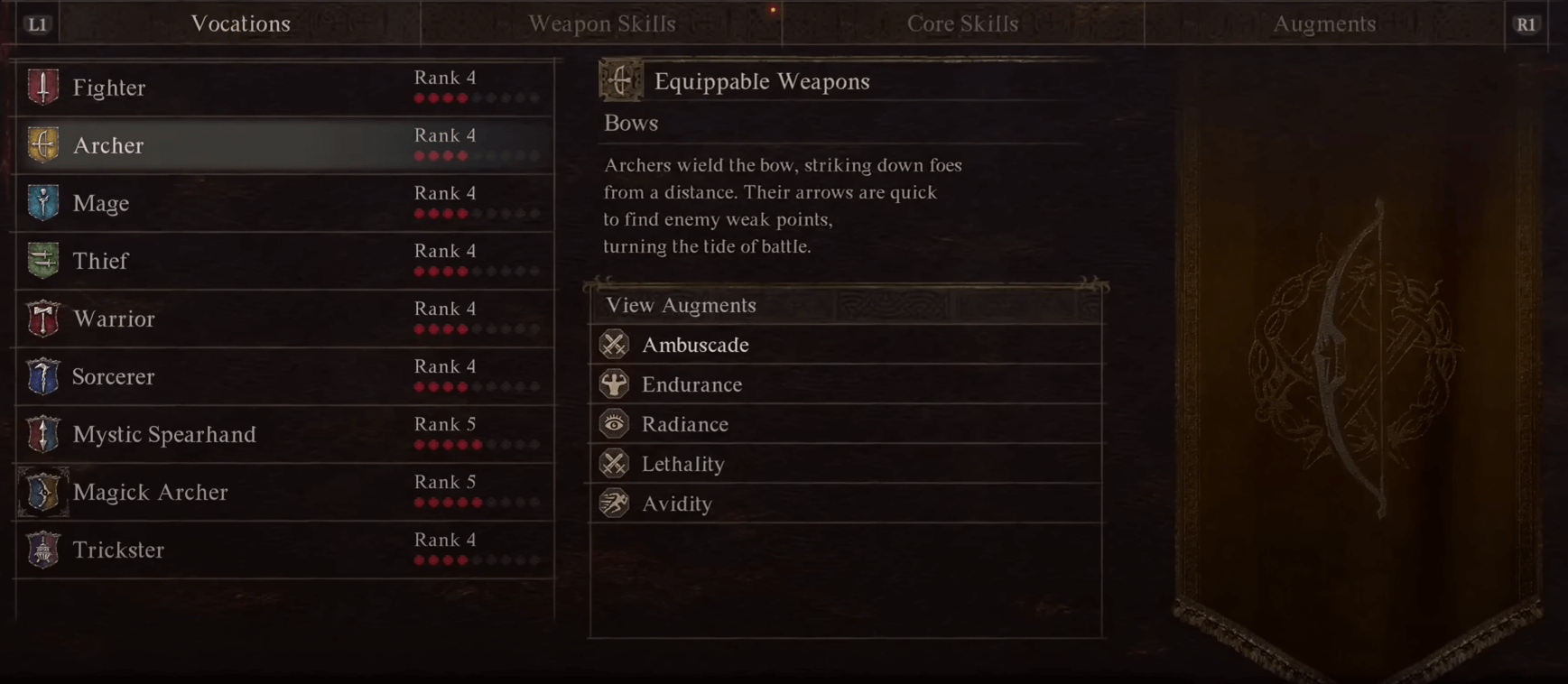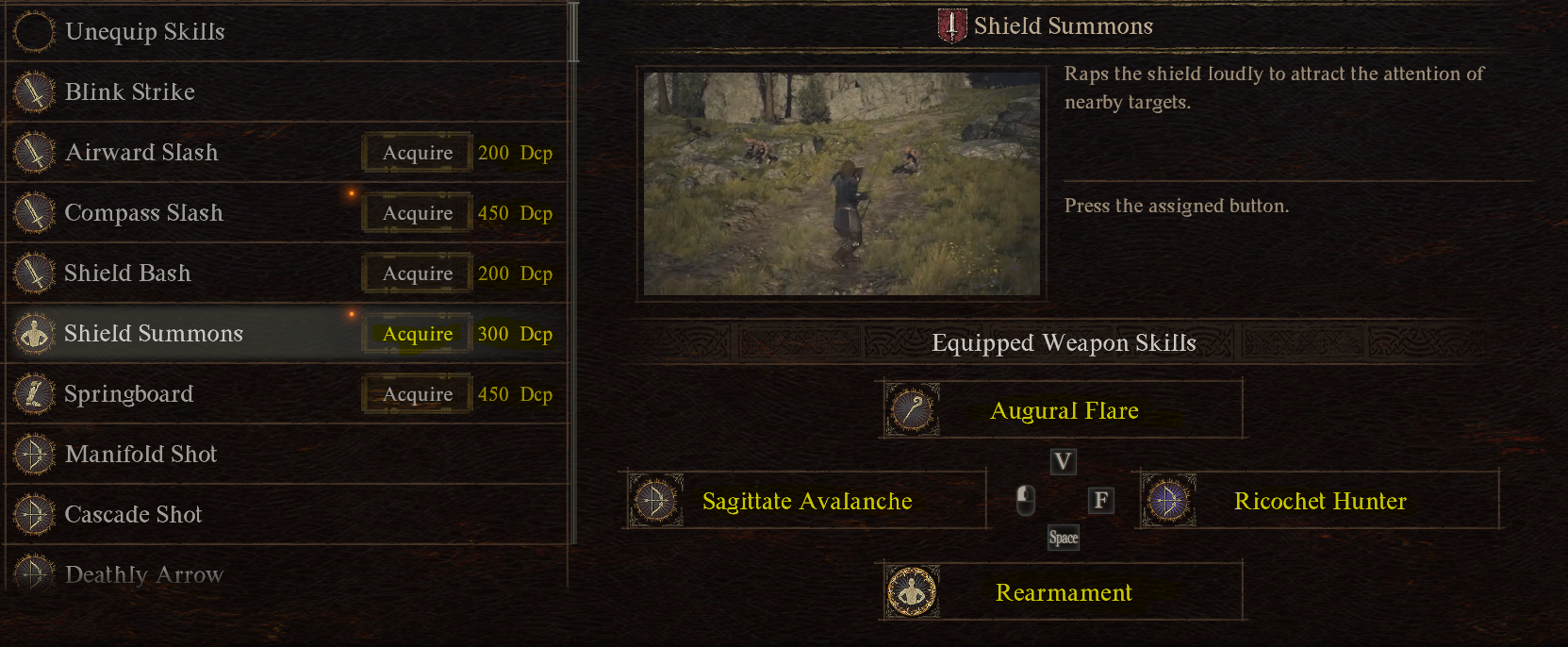Dragon’s Dogma 2 Beginner Guide
In this Dragon’s Dogma 2 beginner guide, I’ll cover the game’s major mechanics and general concepts so you can easily situate yourself on release.
I’ve played quite a bit of Dragon’s Dogma 1 and created this guide after being well into Dragon’s Dogma 2. So far, the game has been great, incredibly easy to get, and a definite upgrade from the first.
This guide will also be spoiler-free; it focuses on explaining mechanics and concepts within Dragon’s Dogma 2. I’ll avoid concepts or mechanics heavily connected to a story or lore.
Having trouble running the game? Head to our guide on how to optimize Dragon’s Dogma 2 for PC.
Vocations
Dragon’s Dogma has an impressively extensive character creator. You can create nearly anything within its editor, and many people have. If you enjoy that level of customization, you’ll love this character creator.
Also, suppose you’re looking for a specific look, such as Gandalf’s appearance. In that case, you can check the FashionDogma Reddit, where people share their characters and creator sliders for you to copy.
After creating your appearance, you can choose between four starting vocations: Fighter, Archer, Mage, and Thief. Each specializes in a specific weapon: the fighter utilizes a Sword/Mace and shield, the Archer wields the bow, the Mage wields the staff, and the Thief duel-wields Daggers.
There are more vocations later in the game, and your choice here isn’t set in stone, so you’ll be able to change quickly and freely later.
To learn more about each vocation, check out our Dragon’s Dogma 2 Vocation Overview here.
Your vocation isn’t locked once chosen, and you can easily switch it later on in the game; in fact, the game mainly revolves around this system of changing vocations and using Augments from one vocation with other vocations.
Character Weight/Height
I think it’s worth noting that the size and weight of your character can affect your character differently and even affect how it is played, or at least it did in the first game, so we can heavily assume it will exist in Dragon’s Dogma 2.
For example, a taller character will have more extended weapon reach and jog slightly faster. In contrast, a shorter character will have a smaller hitbox and can move through small spaces, such as goblin holes.
Additionally, heavier-weight characters have larger carrying capacities and move faster in heavy armor. In contrast, a lighter character uses less stamina and regenerates stamina faster.
Combat
In Dragon’s Dogma 2, combat is relatively fast-paced; most general mobs will die quickly. It’s meant to be this way—the difficulty comes when fighting more giant monsters, managing stamina, avoiding attacks, and climbing up those giant monsters.
Controls
The combat controls in Dragon’s Dogma are straightforward and intuitive and are always shown on the screen in the bottom right. All vocations in Dragon’s Dogma can “Grab” with “E.” This allows you to grab objects and foes and climb larger foes worldwide.
The left Click will be your primary attacking button, while the right click, depending on your vocation, will either be “aim” in the case of a bow or block/dashing in the case of a Fighter or Rogue.
Every vocation also has a “V” secondary attack or ability; it’s usually very vocation-specific and is usually damage or utility-focused.
Pressing CTRL is where your “Weapon Skills” are displayed; you’ll have some starting out depending on the vocation you selected, and you’ll be able to have a total of 4 when you’ve progressed a little.
Holding CTRL and pressing the other 2ndary key simultaneously will activate the skill; for example, CTRL + F will activate my “Richochet Hunter,” as shown in the image below.
Health, Stamina, and Loss Gauge
In Dragon’s Dogma 2, you must manage your Health and Stamina during fights.
The picture above shows the Health bar at the top, with the Stamina bar at the bottom.
I’ll explain stamina first, as the system it’s tied to is much easier to explain; on top of that, the things it affects may not be accurately confirmed but will likely be the same as in Dragon’s Dogma 1. Stamina in Dragon’s Dogma 2 will deplete when running, grappling/mounting foes, blocking with a shield, and using physical and magical skills.
It’s also likely that carrying large quantities of items over your carrying capacity will affect your stamina similarly to DD1 by draining your stamina when you’re over your carrying capacity. Running out of stamina causes your character to become exhausted. You’ll become out of breath and vulnerable for a short time- usually, during this, your Pawns may run over to you and give you a helping hand, equaling a boost of stamina.
On the other hand, health may be slightly more challenging to manage, harder than it was in Dragon’s Dogma 1, it appears at least.
There is a system in Dragon’s Dogma 2 called “Loss Gauge.”. Essentially your health bar will consist of your current health, health you can heal, indicated by the whitish missing health, and the wholly Greyed out portion will indicate “Loss Gauge” which is health you’ll be unable to recover through healing skills and food, that is only healed upon resting.
Mounting
Mounting in Dragon’s Dogma 2 is managed with Stamina. You cannot permanently grapple on top of giant foes, as this will start depleting Stamina. You’ll eventually be forced to jump off to regain Stamina. Specific vocations have access to augments that help with this, such as the Archers Avidity Augment.
It was a viable strategy in Dragon’s Dogma 1 to level the Strider Vocation for the Arm-Strength Augment, allowing you to half the stamina cost of grappling to foes to utilize said Augment on other vocations. In Dragon’s Dogma 2, the thief has this Augment as well; only it has been renamed to “Vigor,” so a good tip if you have plans to play other vocations melee vocations is to level Thief to access the Vigor Augment to use on different vocations.
Weapon Enchantment
In Dragon’s Dogma 2, Enchanting is the ability to enchant weapons with specific elemental attributes through Elemental Boons (Spells); the Mage vocation is the only caster of these boons. There are three boons in total, and they can upgraded; those boons are
- Ice Boon
- Lightning Boon
- Fire Boon
You can make your pawn a Mage or hire another player’s Mage Pawn, as they usually have at least one boon on their pawn. Boons will increase your damage against most monsters and can drastically increase your damage if the creature has a weakness against said boon.
Fighters can also enchant their shields with different attributes to hit enemies with counterattacks/deflects.
Dragon’s Dogma 2, similar to 1, has permanently enchanted weapons. These are typically found in chests worldwide and can be quite powerful, especially if you opt out of using a Mage Pawn.
Day and Night System
It’s worth noting that different areas contain different monsters depending on whether it’s daytime or nighttime. There’s also a chance that areas will increase in the number of monsters gathered; typically, if an area has Goblins during the day, it’s likely to have Ghosts and Skeletons at night.
Pawn Combat
Pawns have been massively upgraded since Dragon’s Dogma 1. They’re more responsive and take advantage of many more mechanics than they did in the first game, though they’re still AI and may get stuck sometimes.
You can hire three pawns in total. A team typically consists of a Mage Pawn for support and two damage dealers. This was similar in Dragon’s Dogma 1, and it wasn’t uncommon to see everyone using a Mage pawn to adjust Boons easily when needed.
Pawn Inclinations
Pawns also functioned differently depending on their inclinations. Inclinations were a way to “set up” how your pawns functioned in specific scenarios. Although inclinations are returning, they have been heavily streamlined, and they will likely be easy to change during your playthrough.
You’ll also be able to pick your pawn inclination during your pawn creation, so be sure to read through depending on the vocation you pick for your pawn; for example, if you are going to use a Mage pawn, it’s likely best to choose the “Kindhearted” inclination, which emphasizes support and is quick to aid allies in need.
Leveling Up
Dragon’s Dogma 2 is quite similar to the systems in the first game; killing monsters leads to leveling up through gaining experience, and experience will vary depending on the difficulty of the monster you’ve slain. You don’t have to allocate stats, as it’s all done automatically based on your chosen vocation.
In the first Dragon’s Dogma, the maximum level you could gain was 200. It was leaked that in Dragon’s Dogma 2, this number is much more significant at a whopping level 999.
You can ignore this part if you haven’t played Dragon’s Dogma 1. Still, if you have, I think it’s worth noting that, unlike in the first, you will not have to use specific vocations to manage stat distribution in Dragon’s Dogma 2. Every time you level up, your stats are based on your chosen profession, and your stats will change when you change your vocation to predetermined numbers. This streamlines the system immensely compared to Dragon’s Dogma 1.
Discipline
Now, in addition, to experience from killing monsters, you’ll also receive discipline, which will vary depending on the difficulty of the monster killed; discipline is used to unlock most things concerning your character and vocations.
Discipline will be used for the following.
- Unlocking Vocations
- Core Skills
- Weapon Skills
- Augments
Vocation Rank
Your vocation rank is separate from leveling up in Dragon’s Dogma, this means your level and stats can be significantly higher than your vocations rank.
A higher vocation rank unlocks more of that vocation skills and augments and is increased simply by using that vocation in combat, so the vocations you use the least will be of lower rank.
Unlocking Vocations
Unlocking specific vocations will have discipline costs, as mentioned before. You’ll have access to every Starter vocation from the start of the game. Still, it has been revealed that Hybrid vocations will be locked behind an NPC who is a Master in their respective vocation. You’ll meet these NPCs while playing, some you may not see for a while; it’s been revealed that you can brute force your way toward these NPCs to unlock vocations early, but that’s up to you on whether you want to look that information up.
Skills
Skills in Dragon’s Dogma are split into Core Skills and Weapon Skills. Contrary to their name, Core Skills are weapon-dependent and thus require a specific weapon. Once learned, any vocation utilizing said weapon will have access to the skill; this is more relevant in the Wayfarer Vocation or Mage/Sorcerer, as they both use staves.
Weapon Skills, on the other hand, are vocation-dependent. Thus, even if two vocations share the same weapon, they may not share the same weapon skills.
Core and Weapon Skills require a certain rank within a vocation to access and unlock and require a certain amount of discipline.
To unlock them, you’ll need to go to the relevant NPC stationed in the Vocation Guild, symbolized on the map by two swords.
Once there, you can ask to “Aquire/Equip skills” and be taken to a menu where you can buy skills for Dcp (Discipline) and equip them to one of four slots.
Augments
Augments in Dragon’s Dogma 2 are essentially passives that you can unlock with Discipline when you reach the required vocation rank for said Augmentation. They can be used with any vocation and are thus incredibly powerful when combined with other vocations; for example, in Dragon’s Dogma 1, the Mage has access to the Attunement Augment at Rank 9.
Rank 9 wasn’t easy to obtain, but once unlocked, you could switch to Sorcerer and unlock the Acuity Augment at Sorcerer Rank 9. This gave you two augments that you could use with any magic class, boosting your Magick stat by 10% and 20%, respectively, for a 30% increase to all Magick, significantly boosting damage.
- Attunement: Increases Magick by 10%
- Acuity: Increases Magick by 20%.
This mechanic has returned in Dragon’s Dogma two, and thus, it’s well worth ranking up multiple vocations to mix and match augments.
Maisters and Maister Skills
In Dragon’s Dogma 2, certain NPCs will be Maisters of their respective vocations. When found, they’ll likely ask you to do something for them and then give you access to Hybrid vocations such as Wayfarer, Magick Archer, Trickster, or Mystic Spearhand.
You’ll also be able to learn Miaster Skills or Ultimate/Legendary skills. Each vocation has anywhere from 1 to 2 Ultimate skills that you can learn from Masters all over Dragon’s Dogma 2, and they’re incredibly powerful skills to boot.
Dragon’s Dogma 2 End-Game
I won’t reveal much about the Dragon’s Dogma 2 End-Game, but it does exist. It’s referred to as “Post-Game,” as it was in Dragon’s Dogma 1, and it consists of a calamity that you must solve. Monsters become stronger, and you gain access to more late-game items.
There’s also news that Dragon’s Dogma 2 will get a relatively early expansion pack, similar to Dragon’s Dogma 1. This expansion pack will likely expand extensively on the game’s end-game content.
Have fun in Dragon’s Dogma 2, Arisen, and remember Wolves hunt in packs.
 Download APP
Download APP